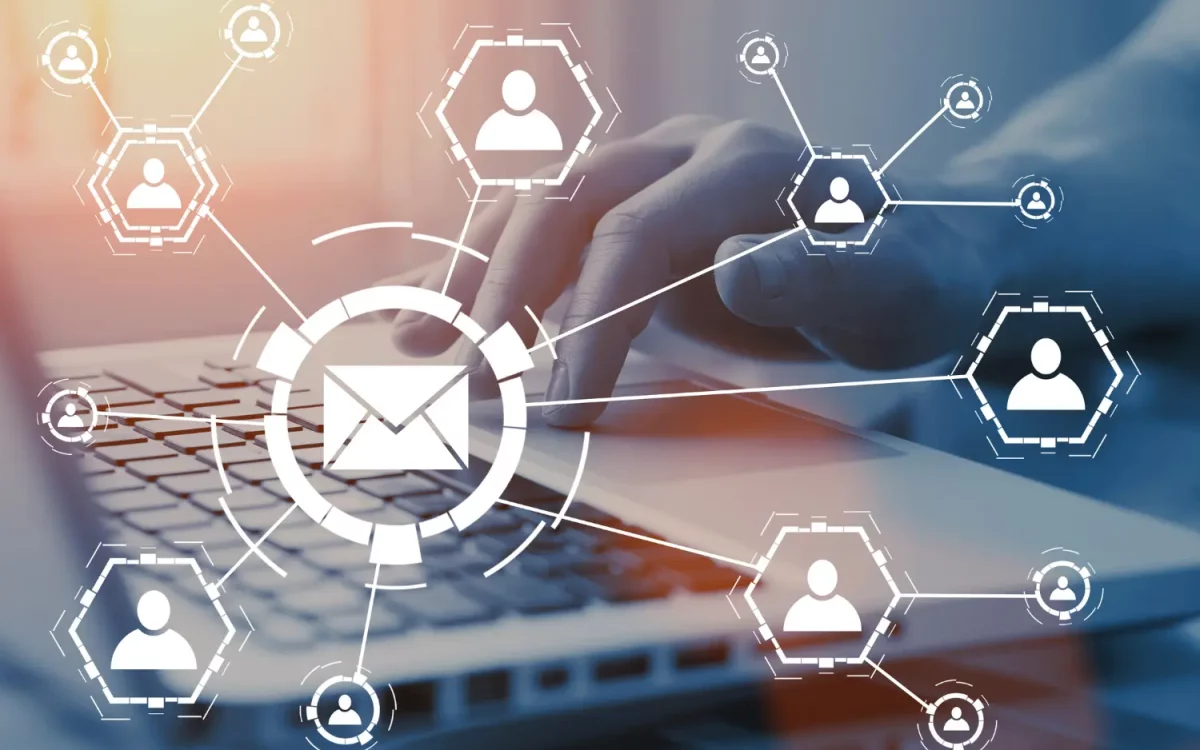Switching from traditional print and mail to digital communication through SMS and email can significantly streamline operations, reduce costs, and enhance customer engagement. At Hansen360, we specialize in guiding businesses through this transition, making sure it’s efficient, effective, and beneficial for long-term success.
But why should your company make the shift, and how can you ensure a smooth change management process? Let’s break it down.
Why Move from Print and Mail to SMS and Email?
For decades, print and mail served as the go-to communication channels for businesses. Whether it was sending invoices, promotional material, or customer service updates, print and mail were reliable, but also resource-heavy. However, with advancements in technology, digital communication methods like SMS and email have taken the lead.
Here are some key benefits of transitioning from print and mail to SMS and email:
1. Cost-Effectiveness
Imagine saving on paper, printing, envelopes, and postage—those expenses add up fast! By moving to SMS and email, your business can drastically cut costs. Emails are free (with minimal overhead for software), and SMS messages cost just a fraction of traditional mail services.
For example, at Hansen360, we’ve helped clients slash their communication expenses by up to 70% simply by embracing email and SMS. Imagine what your company could do with those savings!
2. Faster Delivery and Response Times
With print and mail, you’re at the mercy of postal systems and potential delays. SMS and email, on the other hand, are nearly instantaneous. Emails reach inboxes within seconds, and SMS messages—well, we all know people open their texts within minutes, if not seconds!
This speed can be a game-changer when sending time-sensitive information, like reminders, promotions, or critical updates.
3. Improved Customer Engagement
The beauty of SMS and email lies in their interactivity. Recipients can click links, respond to surveys, or engage with your content in real-time. In contrast, printed mail lacks this level of engagement—after all, no one can “click” on a postcard!
Also, personalization is much easier with digital communication. Hansen360 can help you set up automation tools that ensure every message is tailored to your customers, boosting engagement rates and overall satisfaction.
4. Scalability
Growing your customer base while sticking with print and mail requires scaling up production, which means higher costs and longer delivery times. With SMS and email, reaching thousands—or even millions—of customers becomes a seamless process. No extra staff or equipment is needed to handle a higher volume of messages, just smart technology.
At Hansen360, we’ve worked with businesses ready to scale, making sure their communication systems can grow alongside them without a hitch.
5. Environmental Impact
Let’s not forget the planet. Switching to digital communications significantly reduces your company’s carbon footprint. Fewer trees cut down, less ink wasted, and no transportation emissions—all leading to a greener operation. Many companies are now focusing on sustainability, and customers increasingly value businesses that take eco-friendly actions.

The Role of Change Management in the Transition
Transitioning from print and mail to digital channels isn’t just about flipping a switch—it involves people, processes, and systems working together smoothly. That’s where change management comes into play.
1. Communicate the Benefits Internally
It’s crucial to ensure your employees are on board with the shift. At Hansen360, we recommend starting with clear internal communication about the benefits of this change, including how it will make their work more efficient and free up resources.
By focusing on how the transition will reduce administrative burdens and enable your team to focus on higher-value tasks, you can get employees excited about the move.
2. Training and Support
No change management process is complete without proper training. While SMS and email might seem straightforward, your staff may need time to adjust to new tools, software, and workflows. At Hansen360, we help businesses set up user-friendly platforms and provide thorough training to ensure your team feels confident and supported throughout the transition.
3. Implement Gradually
One common mistake businesses make is trying to switch overnight. We recommend a phased approach, where print and mail slowly fade out while SMS and email ramp up. This gradual implementation ensures no disruptions to your current operations and gives everyone—both staff and customers—time to adjust.
We also encourage creating a timeline with specific milestones, allowing you to track progress and pivot if necessary.
4. Monitor and Adjust
Just because the switch is made doesn’t mean the work is done. Monitoring customer responses and engagement rates is key. You might discover, for instance, that certain types of customers prefer email over SMS or vice versa. At Hansen360, we offer ongoing support post-transition to ensure the process remains smooth, and any issues that arise are quickly addressed.

Common Challenges (and How Hansen360 Can Help)
While the benefits are clear, there are challenges businesses might face when shifting from print and mail to SMS and email. Don’t worry—Hansen360 has seen it all, and we know how to tackle these issues head-on.
Challenge 1: Customer Preferences
Some customers are more attached to traditional mail. No problem! A hybrid approach can be used during the initial stages, allowing your company to cater to both preferences until customers naturally shift to digital. We can help set up systems that offer this flexibility.
Challenge 2: Data Privacy
Handling customer data for SMS and email marketing requires compliance with regulations like GDPR and CAN-SPAM. At Hansen360, we ensure that your data processes are secure, compliant, and easy to manage, so you won’t face any legal hiccups during the transition.
Challenge 3: System Integration
Your new SMS and email systems need to integrate seamlessly with your existing software, whether that’s CRM systems or marketing platforms. Hansen360 excels at system integration, ensuring everything works together without disruption.
Steps to Ensure a Smooth Transition
To summarize, here are the essential steps to ensure a smooth transition:
1. Assess Your Current Communication Channels: Understand the volume and types of messages you currently send through print and mail.
2. Create a Transition Plan: Develop a phased implementation strategy, defining what gets sent via SMS or email and when.
3. Choose the Right Tools: Invest in user-friendly SMS and email software, which Hansen360 can help you set up and optimize.
4. Train Your Team: Ensure everyone understands the new processes and tools, and offer continuous support during the transition.
5. Monitor and Adapt: Track engagement and response rates, and adjust your approach based on customer feedback and behavior.
Wrapping Up: A Brighter, More Efficient Future with Hansen360
Transitioning from print and mail to SMS and email is more than just a cost-saving measure—it’s an opportunity to improve communication speed, boost customer engagement, and scale your business more effectively. At Hansen360, we pride ourselves on making this shift as seamless as possible for our clients, providing the tools, training, and support necessary for long-term success.
If you’re ready to make the move, or even just curious about where to start, we’re here to help. Let Hansen360 guide you through the process and unlock the full potential of modern communication.
FAQs
Q: What if some of my customers still prefer traditional mail?
A: No worries! We can help you implement a hybrid approach that allows you to cater to both print and digital preferences during the initial stages.
Q: Is there a risk of losing customers during the transition?
A: Not if done correctly. By implementing gradual change, keeping customers informed, and allowing flexibility, you can ensure a smooth transition.
Q: Will my team need to learn new tools?
A: Yes, but we make the training simple. Hansen360 ensures your staff is comfortable with the new systems and provides ongoing support.




